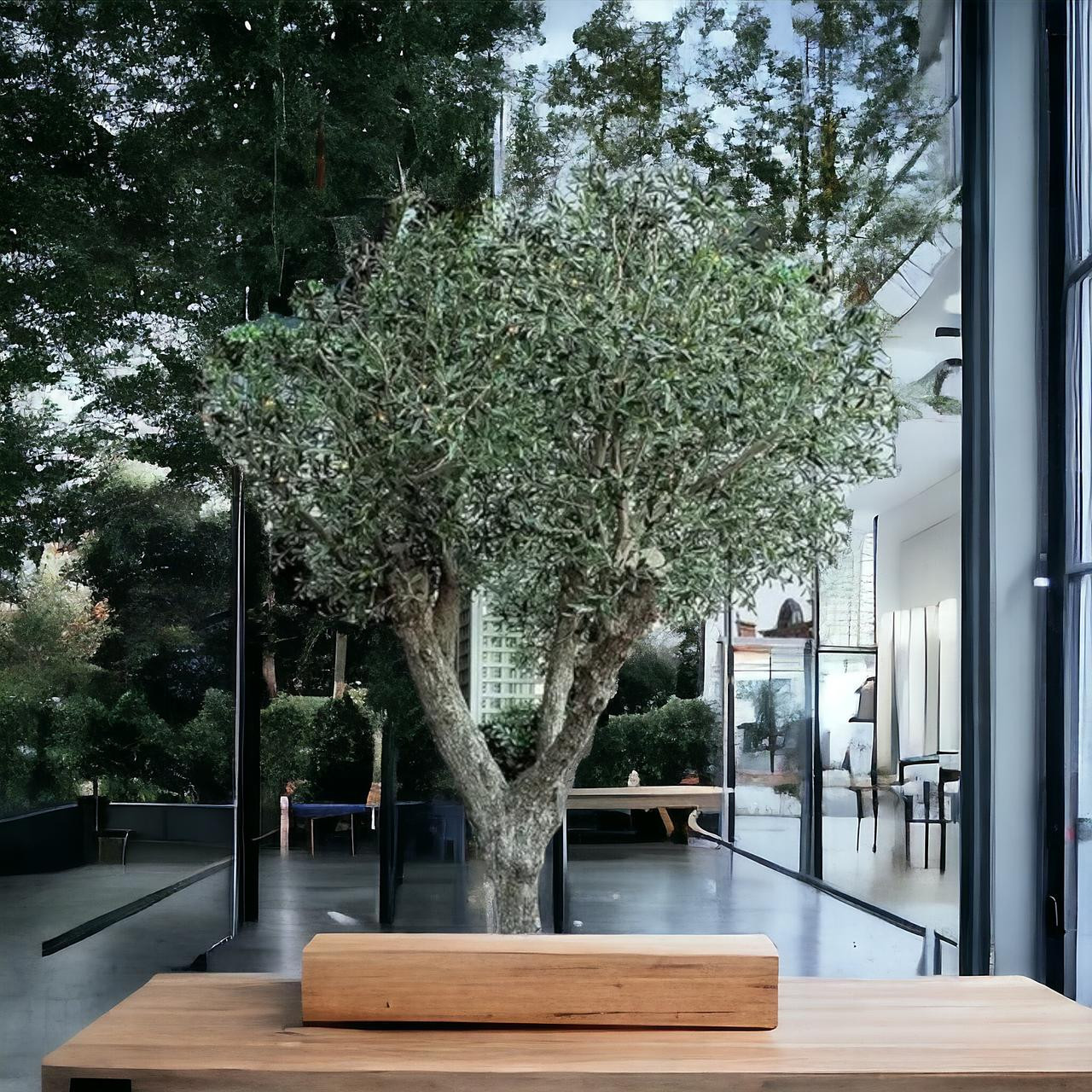Different Varieties of Olive Trees: Which One is Right for You?
Aug 10, 2024
Different Varieties of Olive Trees: Which One is Right for You?
Olive trees have been cultivated for thousands of years, not only for their fruit but also for their historical, cultural, and economic significance. Originating from the Mediterranean region, these trees are celebrated for their resilience, longevity, and the rich, flavorful olives they produce. However, not all olive trees are the same. There are numerous varieties, each with its unique characteristics, flavor profiles, and ideal growing conditions. This blog post will explore some of the most popular olive tree varieties, helping you determine which one might be the best fit for your garden or orchard.
An Overview of Olive Tree Varieties
Olive trees are generally classified by the type of olive they produce—either for oil or table olives. However, some varieties are versatile and can be used for both purposes. The choice of olive tree depends on several factors, including climate, soil type, and intended use of the olives. Below are some of the most common olive tree varieties, each with its distinct features and requirements.
1. Arbequina
Origin: Spain
Primary Use: Oil and table olives
Flavor Profile: Mild, buttery, and slightly fruity
The Arbequina olive tree is one of the most popular varieties for home growers, particularly in regions with mild winters and hot, dry summers. Originating from Catalonia, Spain, this tree is prized for its small, flavorful olives, which produce a high-quality, mild olive oil. The oil has a fruity aroma with a slight hint of apple, making it ideal for both cooking and finishing dishes.
Characteristics:
Arbequina trees are relatively small, with a bushy growth habit that makes them well-suited for smaller spaces or container planting. They are highly productive and tend to bear fruit early, often within three to four years of planting. The olives are small and brownish-purple when ripe, and the tree is known for its resistance to common olive diseases.
Growing Conditions:
Arbequina trees thrive in well-drained soils with full sun exposure. They are relatively cold-tolerant compared to other olive varieties but still prefer mild winters. These trees are also drought-resistant, making them an excellent choice for arid regions. However, regular watering is essential during the first few years to establish a strong root system.
2. Manzanilla
Origin: Spain
Primary Use: Table olives
Flavor Profile: Rich, slightly bitter, and nutty
The Manzanilla olive tree, another variety native to Spain, is primarily grown for its table olives. The name "Manzanilla" means "little apple" in Spanish, a nod to the olive's small, round shape. These olives are known for their firm texture and slightly bitter, nutty flavor, making them a favorite for pickling and snacking.
Characteristics:
Manzanilla trees are medium to large in size, with a spreading canopy. The olives are typically harvested while still green and are often cured in brine or dry salt. Manzanilla olives are also used in the production of Spanish-style stuffed olives, often filled with pimentos, garlic, or almonds.
Growing Conditions:
This variety prefers warm, temperate climates and well-drained, loamy soils. While Manzanilla trees are relatively drought-tolerant, they require consistent watering during the growing season to produce high-quality fruit. These trees are also sensitive to frost, so they are best suited to regions with mild winters.
3. Kalamata
Origin: Greece
Primary Use: Table olives
Flavor Profile: Rich, fruity, and slightly smoky
Kalamata olives are perhaps the most famous of all Greek olives, renowned for their deep purple color, almond shape, and rich, fruity flavor. These olives are commonly used in Mediterranean cuisine, particularly in salads, tapenades, and as a table olive.
Characteristics:
Kalamata olive trees are medium-sized with an upright growth habit. The olives themselves are large and oval-shaped, with a distinct pointed end. They are typically harvested when fully ripe, giving them their characteristic dark purple color. Kalamata olives are often preserved in red wine vinegar, enhancing their rich, fruity flavor.
Growing Conditions:
Kalamata trees thrive in Mediterranean climates with hot, dry summers and mild winters. They prefer well-drained soils, particularly those that are slightly acidic. These trees are somewhat more challenging to grow in non-Mediterranean climates due to their sensitivity to cold and humidity. However, with proper care and protection, they can be cultivated in regions with similar conditions.
4. Picual
Origin: Spain
Primary Use: Olive oil
Flavor Profile: Strong, bitter, and pungent
Picual is the most widely cultivated olive variety in Spain and is known for producing a robust and aromatic olive oil. The oil has a strong, slightly bitter taste with a peppery finish, making it ideal for cooking, especially for frying or grilling.
Characteristics:
Picual trees are large and vigorous, with a dense canopy. They are highly productive and can yield large quantities of olives, which are typically small and oval-shaped. The olives are usually harvested while still green to produce oil with a high polyphenol content, contributing to its bitter and pungent flavor.
Growing Conditions:
Picual trees are well-suited to dry, hot climates and can tolerate a wide range of soil types, although they prefer well-drained, calcareous soils. They are also relatively resistant to olive diseases and pests, making them a hardy choice for commercial and home growers alike. However, these trees require full sun and regular pruning to maintain their productivity.
5. Leccino
Origin: Italy
Primary Use: Olive oil and table olives
Flavor Profile: Mild, fruity, and slightly spicy
Leccino is one of the oldest and most widely cultivated olive varieties in Italy. It is prized for its versatility, producing both high-quality olive oil and flavorful table olives. The oil from Leccino olives is mild and fruity, with a slightly spicy aftertaste, making it suitable for a wide range of culinary uses.
Characteristics:
Leccino trees are medium to large in size, with a broad, spreading canopy. The olives are small to medium-sized and turn a deep purple-black when fully ripe. Leccino trees are known for their adaptability and can thrive in various climates and soil types. They are also relatively cold-tolerant, making them a good option for regions with cooler winters.
Growing Conditions:
Leccino trees prefer well-drained, fertile soils and full sun exposure. They are drought-resistant once established but require regular watering during the early years. These trees are also more tolerant of frost than many other olive varieties, making them suitable for growing in regions with occasional cold snaps.
6. Frantoio
Origin: Italy
Primary Use: Olive oil
Flavor Profile: Fruity, aromatic, with a hint of bitterness
Frantoio is another classic Italian olive variety, highly regarded for producing some of the finest extra virgin olive oils in the world. The oil from Frantoio olives is fruity and aromatic, with a well-balanced flavor that includes hints of bitterness and spiciness. It is ideal for drizzling over salads, pasta, and grilled vegetables.
Characteristics:
Frantoio trees are medium-sized with an upright growth habit. The olives are small to medium in size and turn a deep green or black when ripe. Frantoio trees are highly productive and can produce large quantities of olives, making them a favorite among commercial olive oil producers.
Growing Conditions:
Frantoio trees thrive in Mediterranean climates with hot, dry summers and mild, wet winters. They prefer well-drained, sandy-loam soils and full sun exposure. While they are relatively drought-tolerant, they require consistent watering during the growing season to produce high-quality fruit. These trees are also sensitive to frost and should be protected from cold winds.
7. Mission
Origin: United States (California)
Primary Use: Table olives and olive oil
Flavor Profile: Mild, slightly fruity, and versatile
The Mission olive tree is a uniquely American variety, developed by Spanish missionaries in California during the 18th century. It is a versatile variety, producing both table olives and olive oil. The olives have a mild, slightly fruity flavor, making them suitable for a wide range of culinary uses.
Characteristics:
Mission trees are medium to large in size, with a rounded, spreading canopy. The olives are small to medium in size and can be harvested green or black, depending on the desired use. Mission olives are commonly used in the production of black table olives, which are often canned or brine-cured.
Growing Conditions:
Mission trees are well-suited to the warm, dry climates of California and similar regions. They prefer well-drained soils and full sun exposure. These trees are relatively hardy and can tolerate a range of soil types, although they perform best in slightly acidic to neutral soils. Mission trees are also moderately drought-tolerant once established but require regular watering during the early years.
Choosing the Right Olive Tree for You
When selecting an olive tree variety, it's essential to consider your specific growing conditions, including climate, soil type, and available space. Additionally, think about the intended use of the olives—whether you want to produce olive oil, table olives, or both.
Climate:
Olive trees thrive in Mediterranean climates with hot, dry summers and mild, wet winters. However, some varieties, like Leccino and Mission, are more cold-tolerant and can be grown in regions with cooler winters. If you live in an area prone to frost, consider choosing a cold-hardy variety or be prepared to protect your trees during cold snaps.
Soil:
Most olive trees prefer well-drained, fertile soils, although some varieties, like Picual and Mission, can tolerate a range of soil types. Ensure your soil has good drainage, as olive trees are susceptible to root rot in waterlogged conditions. Amending the soil with organic matter can improve fertility and drainage.
Space:
Consider the size and growth habit of the olive tree when selecting a variety. Smaller varieties like Arbequina are well-suited for compact spaces or container planting, while larger varieties like Manzanilla and Picual require more room to spread. Pruning can help manage the size of your tree and maintain its shape.
Purpose:
Think about how you plan to use the olives. If you're interested in producing your own olive oil, varieties like Arbequina, Picual, Frantoio, and Leccino are excellent choices. For table olives, consider Manzanilla, Kalamata, or Mission. Some varieties, like Arbequina and Leccino, are versatile enough to be used for both purposes.
Conclusion
Olive trees are not only a symbol of peace and prosperity but also a rewarding addition to any garden or orchard. With a variety of species to choose from, each offering unique characteristics and flavors, there is an olive tree suited to nearly every growing condition and culinary preference.
Whether you are looking to produce your own olive oil, enjoy fresh table olives, or simply cultivate a beautiful, resilient tree, understanding the different olive varieties will help you make an informed decision. By selecting the right variety for your specific needs and conditions, you can enjoy the timeless beauty and bounty of olive trees for years to come.




